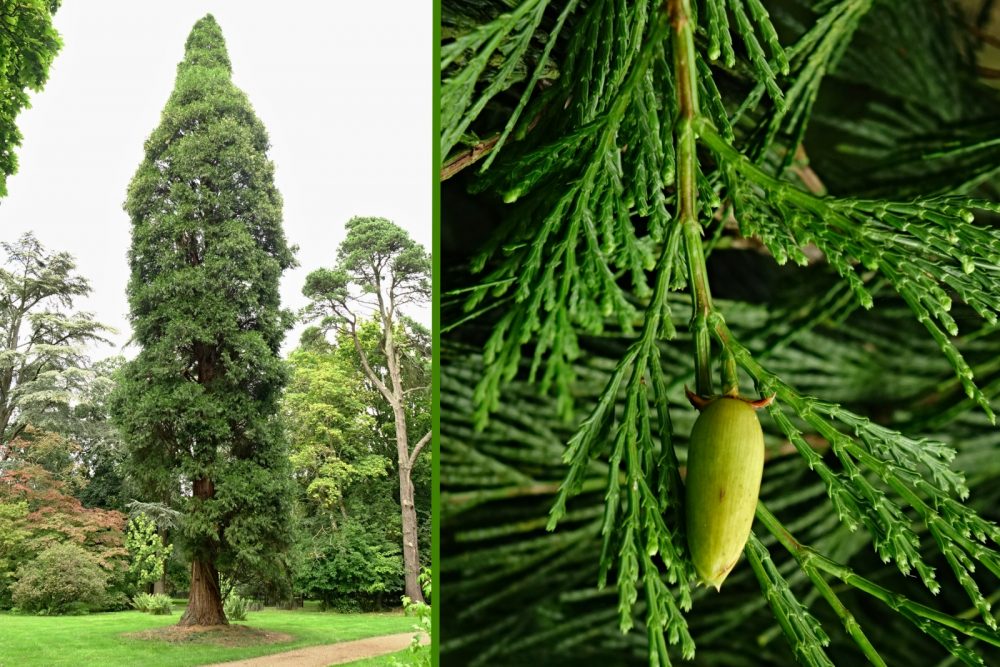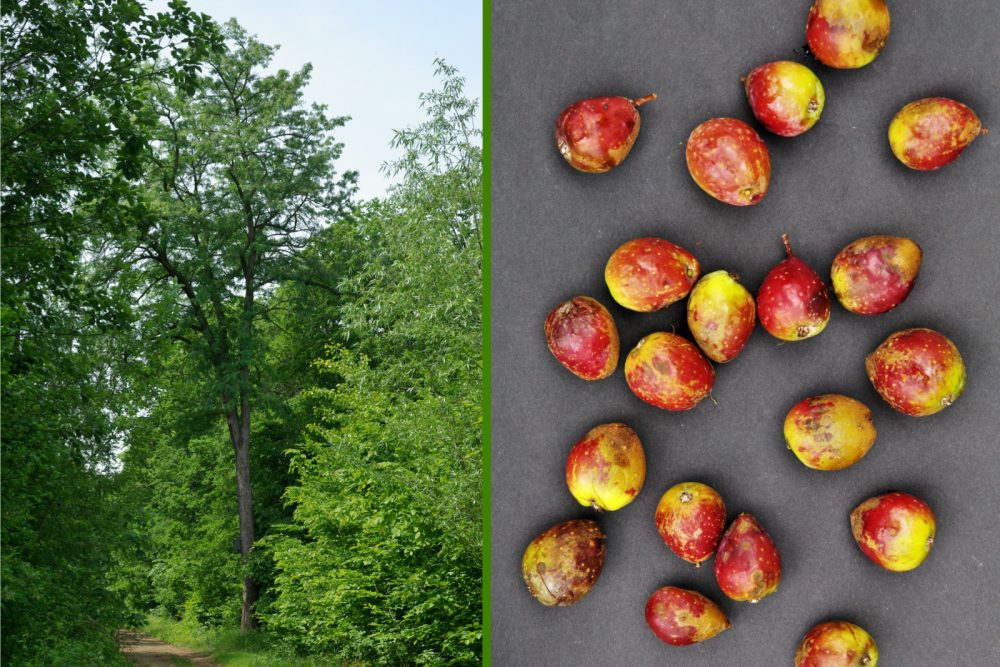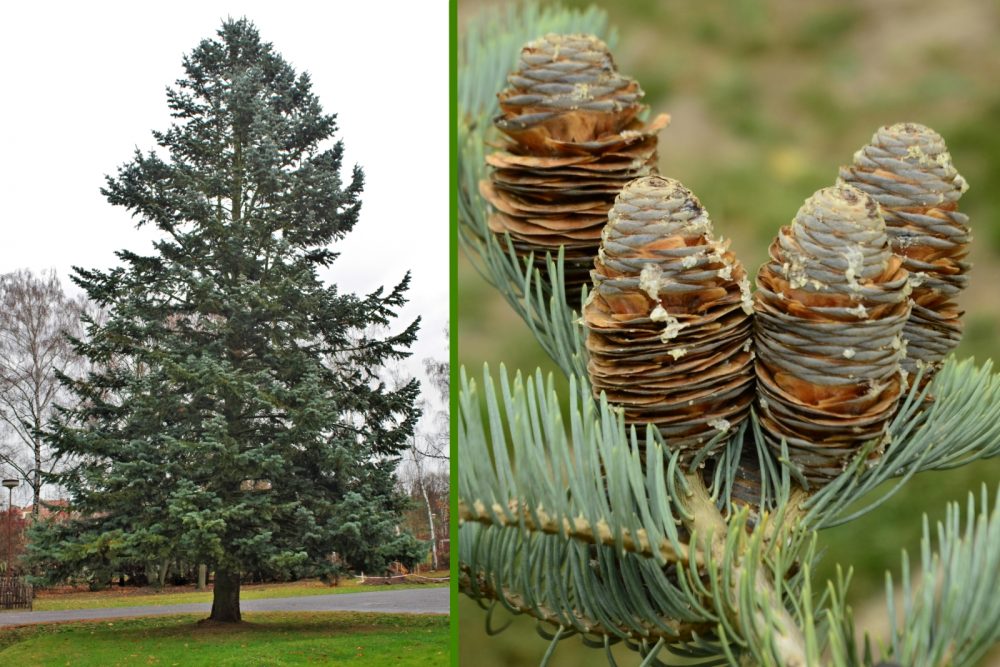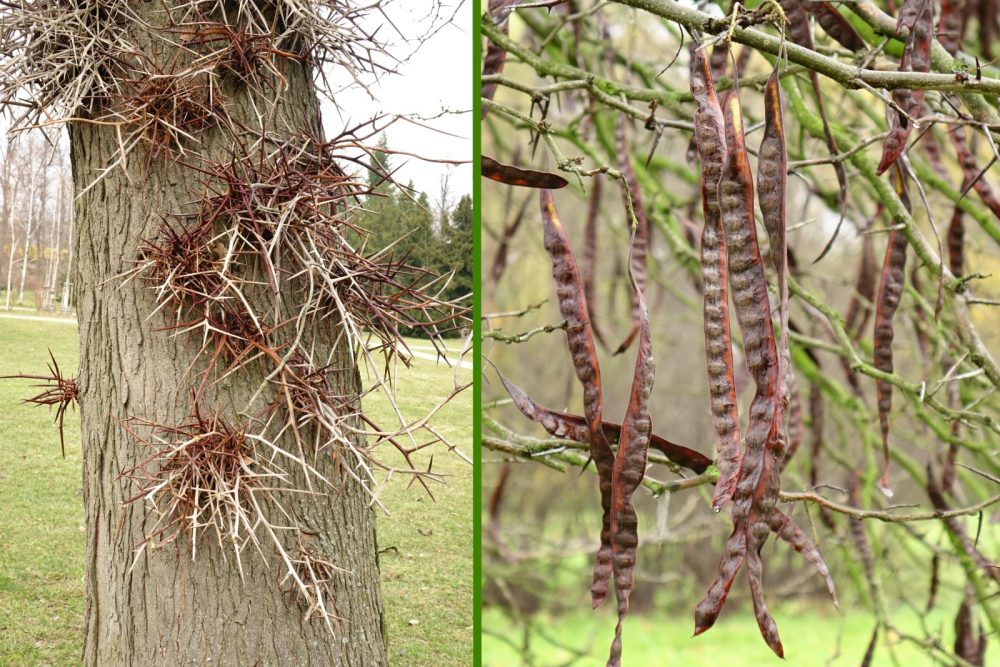Will introduced tree species help us in forest regeneration, after calamity case?
The drought in combination with increasing average annual temperature and insect pests damages, these factors are the main reasons of current state of forest health. Together, these factors indicate deepening climate change. More often, scientists and foresters are asking the question whether it would be possible to use certain species of exotic trees in forest regeneration.
As for the correct selection of introduced tree species suitable for our natural conditions, this is not easy. Scientists from VÚLHM, v. v. i. and ČZU in Prague, with the support of Lesy ČR, s. p., therefore prepared the publication Catalog of taxons of introduced tree species with the potential of forestry use in ecosites with lower moisture availability. Regarding the aim of this publication, this is to offer foresters and other interested parties expert basis for deciding on the choice of the tree species composition in conditions of a changing climate and increasing problems with a lack of soil moisture.
 Photo: California incense-cedar (Calocedrus decurrens), author V. Bažant
Photo: California incense-cedar (Calocedrus decurrens), author V. Bažant
In the Catalog, there are described 23 introduced tree species that can be used especially in the conditions of lower forest vegetation zones, which have been suffering from Norway spruce decline in the last period. The Catalog includes: Conifers – black pine (Pinus nigra), Macedonian pine (Pinus peuce), ponderosa pine (Pinus ponderosa), lodgepole pine (Pinus contorta), Lawson’s cypress (Chamaecyparis lawsoniana), Douglas fir (Pseudotsuga menziesii), greek fir (Abies cephalonica), Bulgarian (Macedonian) fir (Abies borisii-regis), Colorado fir (Abies concolor), western hemlock (Tsuga heterophylla), California incense-cedar (Calocedrus decurrens), giant sequoia (Sequoiadendron giganteum), Engelmann spruce (Picea engelmanii), western redcedar (Thuja plicata); Deciduous trees – Hungarian oak (Quercus frainetto), European turkey oak (Quercus cerris), red oak (Quercus rubra), honey locust (Gleditsia triacanthos), service tree (Sorbus domestica), sweet chestnut (Castanea sativa), Turkish hazel (Corylus colurna), bitternut hickory (Carya cordiformis), „Alphens globe“ (Platanus ×hispanica).
For the selection of suitable introduced species, there have been used following basic criteria: The production and usability of wood, resistance to biotic and abiotic factors (with emphasis on drought), suitability for mixtures, but also other indicators (ability of natural regeneration, crossability, and invasibility). The selection criteria have been adjusted to predict the manifestation of tree species in the conditions of a changing climate.
 Photo: Service tree (Sorbus domestica), author M. Studnička
Photo: Service tree (Sorbus domestica), author M. Studnička
In systems of ecologically oriented forest management, it is necessary to prefer native tree species, which are a reflection of evolutionary action in the given conditions. However, if there is a relevant justification, it is also desirable to use introduced trees, but in such a way that they do not negatively disturb the forest ecosystem and the landscape. There is no doubt that these tree species will always influence the new habitats in a certain way, but under the right selection, these changes can be less significant than those that can be e.g. caused by a high proportion of Norway spruce in natural conditions for deciduous and mixed forests.
Introduced tree species represent one of the options for mitigating damage caused by intensive withering and dying of Norway spruce stands. In particular, tree species coming from areas with comparable climatic conditions are considered, while it is necessary to avoid planting species that have been found to have serious negative characteristics, especially the tendency to spread invasively and the risk of hybridization with native tree species. The benefits can be not only productive and ecological characteristics (preserving the forest biocenosis), but also connected with aesthetic consequences, technical use, landscape creation, soil protection, water protection, recreation purposes, health hygiene, education use, etc.
However, there are also threats associated with the use of some introduced tree species. The most serious threat is invasive behaviour, or the invasion of harmful organisms bound to them (fungal and insect pathogens), as it can be currently observed with bud blight damage in Norway spruce having been caused by Gemmamyces piceae, or ash waxworm and alder fungus, which attack our domestic tree species. Some non-native tree species can also cause a number of other environmental and socioeconomic problems, e.g. threats to human health through the production of toxins, allergenic pollen, etc.
 Photo: Colorado fir (Abies concolor), H. Prknová, V. Bažant
Photo: Colorado fir (Abies concolor), H. Prknová, V. Bažant
The consequences of decisions made in the framework of forestry planning are often manifested (positively or negatively) just in a more distant time horizon. From this reason why, it is necessary to pay careful attention to activities, which include the composition of forest stand mixtures. It is always necessary to respect the genetic origin (provenance) of the reproductive material and the site conditions at the place of planting, also with regard to the expected progress of climate change.
The economics itself, this is probably the most important reason why introduced species of forest trees are used in a long time in the Czech Republic as well as in other countries. Silviculture of some introduced species (e.g. Douglas-fir, black walnut) is already traditional, but their spectrum is changing over time, also with regard to dynamic changes of the external environment factors, which forestry must respond them. The basic methods include the modification of the species composition of forest stands in order to ensure their sufficient resistance. A wider application of heat-loving oaks, which are native to a smaller part of the Czech Republic, it is also expected, so in case of these species it is rather a matter of supporting natural expansion.
Preserving the existence of the forest even in climatically unfavourable sites, it has a high economic impact, which includes the maintenance of the ecological stability of the forest environment, the preservation of biodiversity and the fulfilment of a whole range of other non-production functions (ecosystem services). But above all of this, these factors still enable the continuation of the production of renewable wood raw material.
 Photo: honey locust (Gleditsia triacanthos), V. Bažant
Photo: honey locust (Gleditsia triacanthos), V. Bažant
From the point of view of sustainable forest management, higher tree species variability can contribute, due to the use of appropriately selected introduced species, among other things, to reducing the costs of artificial forest regeneration by limiting the need for repeated plantings (e.g. the valued growth ability of red oak in the rain shadow of the Ore Mountains).
Some introduced tree species (e.g. black walnut, Lawson’s cypress, California incense-cedar, and sweet chestnut) can provide economically very valuable assortments for special uses. Other species can be valuable for beekeeping, gamekeeping or food production (sweet chestnut, European turkey oak, service tree).
The Catalog was prepared in the frame of research project GS LČR č. 15/2016 „Establishment of research trials with introduced tree species, which could be potentially resistant to drought, in the North Moravia upland area affected by Norway spruce declining“ (Založení výzkumných ploch s introdukovanými dřevinami potenciálně odolnými vůči suchu v oblasti pahorkatin severní Moravy postižené chřadnutím smrku).
„Catalog of taxons of introduced tree species with the potential of forestry use in ecosites with lower moisture availability“(Katalog taxonů introdukovaných dřevin s potenciálem lesnického využití na stanovištích s nižší dostupností vláhy) is possible to be downloaded here.
Authors of Catalog: Ing. mult. Bc. Petr Novotný, Ph.D. Ing. Martin Fulín, Ph.D. Ing. Václav Bažant, Ph.D., e-mail: pnovotny@vulhm.cz
Prepared by: Ing. Jan Řezáč, VÚLHM, v. v. i., e-mail: rezac@vulhm.cz
Illustrative photo: Examples of tree species from the Catalog
Introductory photo: Douglas fir, author H. Prknová
